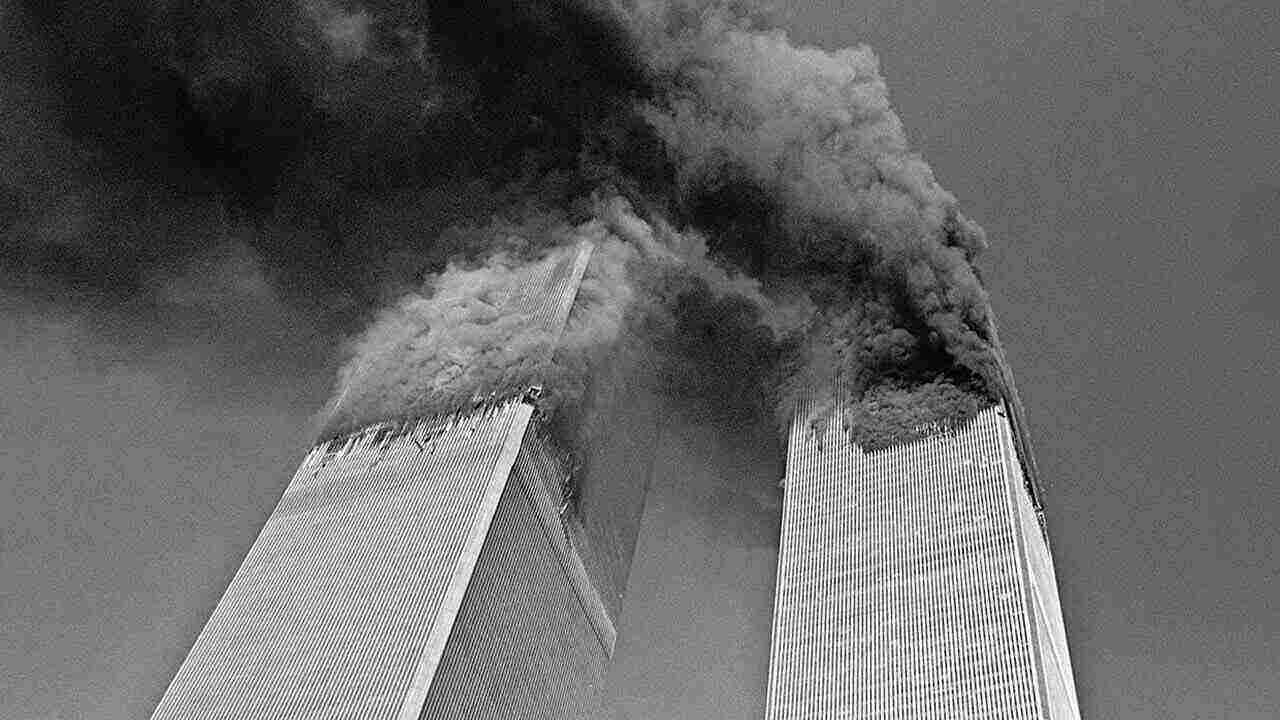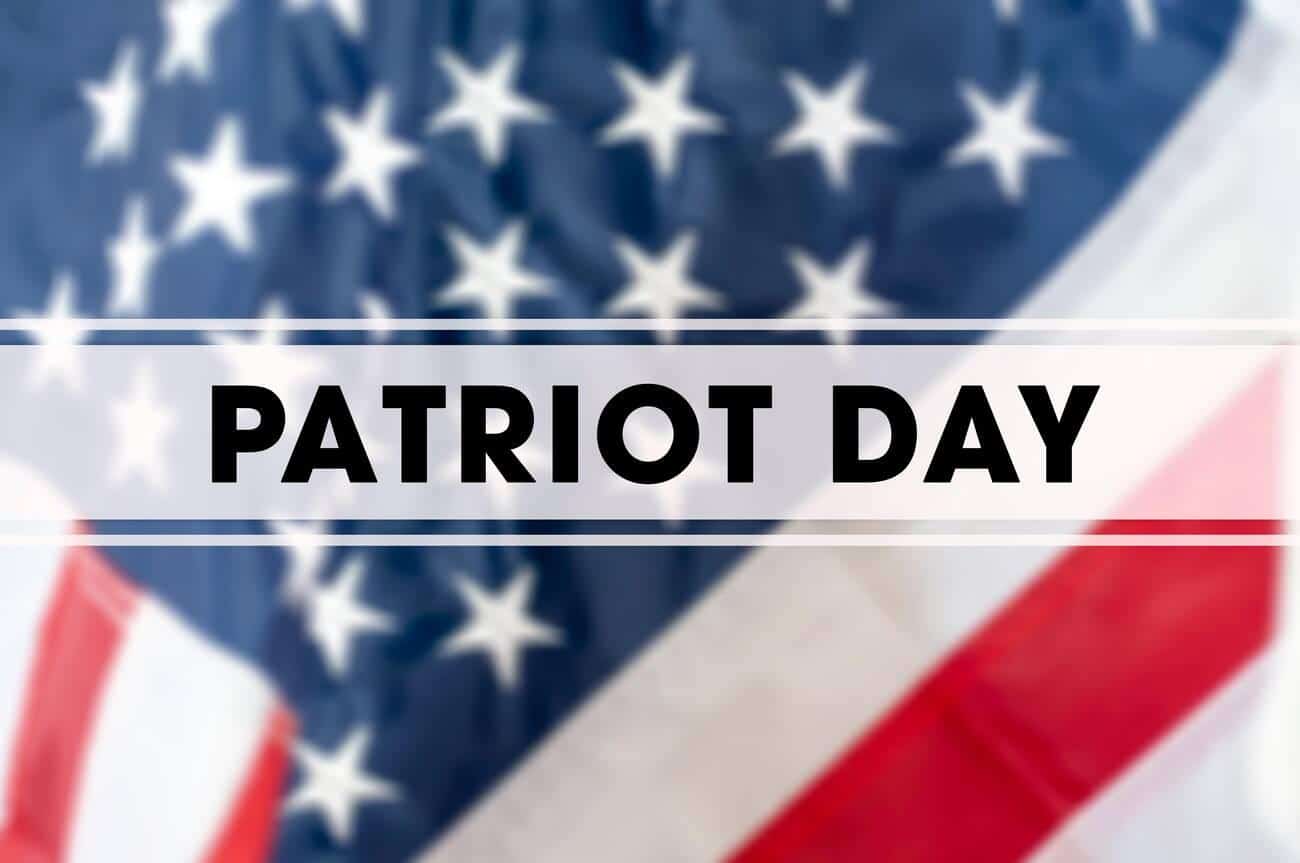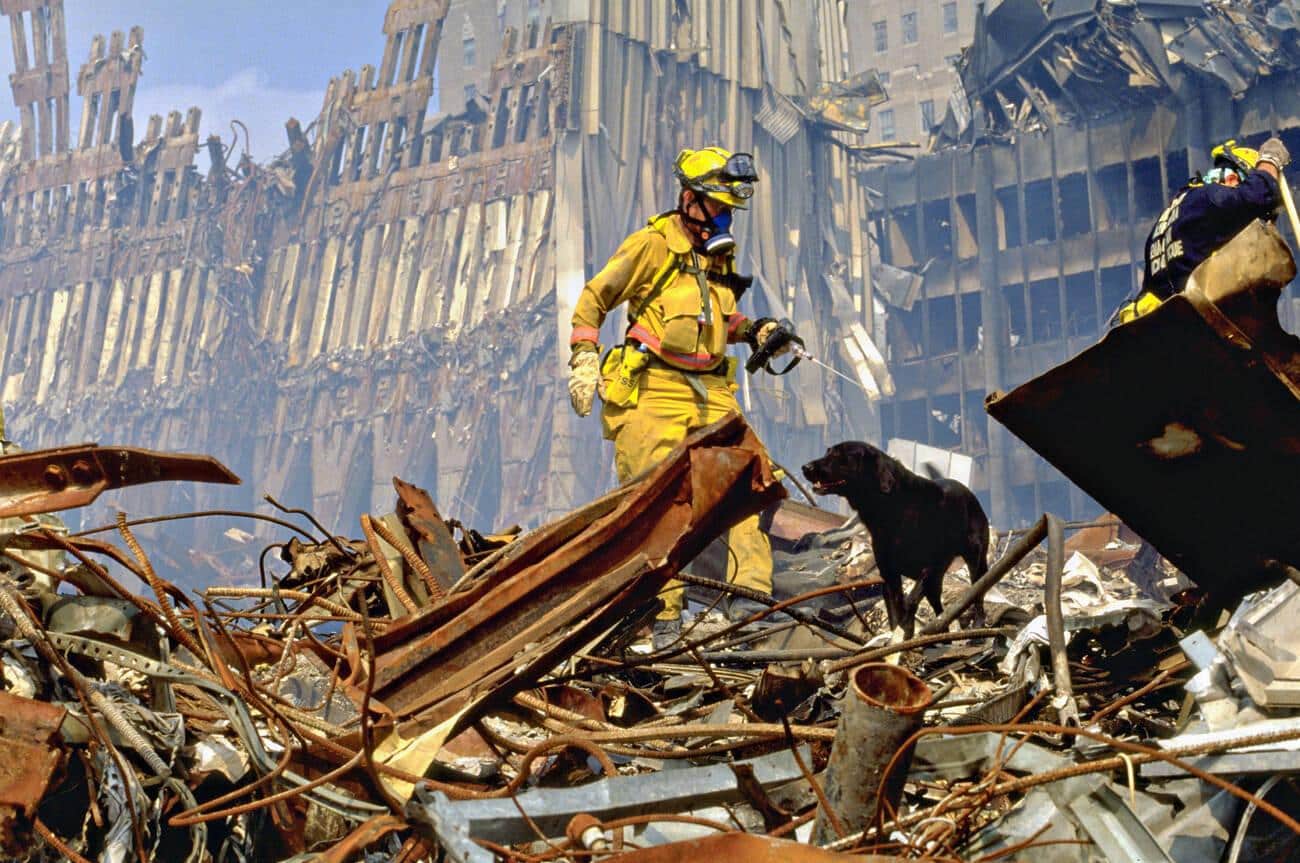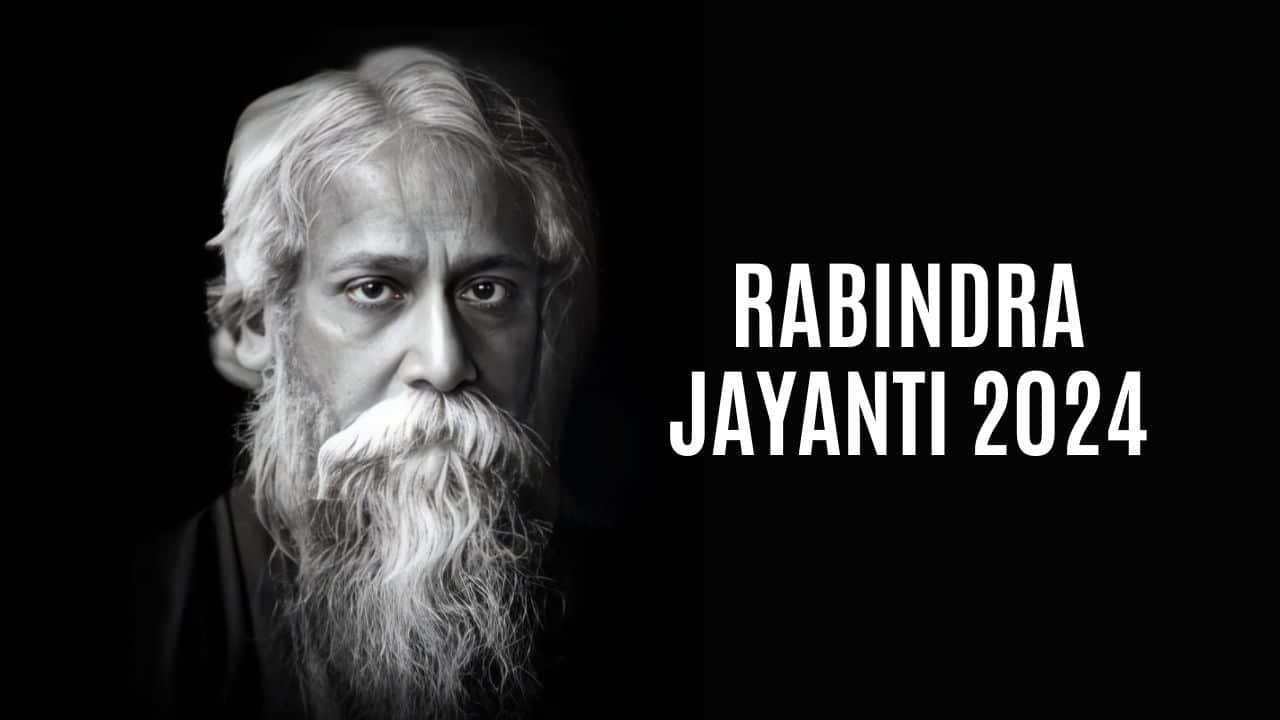Introducing one of the most devastating 9/11 terrorist attacks in history is a day to be remembered by generations to come. On September 11th, 2001, nearly 3000 people lost their lives when four commercial airplanes were hijacked by Al Qaeda terrorists and directed into the Twin Towers and the Pentagon.
In this blog post, we will look into everything you need to know about the 9/11 attack, including its background, timeline of events, impact on security policies, and the latest updates.
At this moment, you’ll find valuable insights aimed at providing adequate information for understanding how an event like 9/11 impacts us today. As the world remembers 22 years after without giving up hope of peace in our time, let’s explore what can be learned from this tragic incident.
Content Highlights
- The 9/11 attack on the Twin Towers took place on September 11, 2001, and was carried out by 19 Al-Qaeda terrorists led by Khalid Sheikh Mohammed.
- Over 3,000 people lost their lives in the coordinated attacks, which included the hijacking of four commercial airplanes – two into the Twin Towers in NYC and one into the Pentagon; the fourth crashed near Shanksville, Pennsylvania, due to resistance of passengers onboard as they were informed about tragedies unfolding in NY city.
- The aftermath of the attack saw increased security measures both nationally and abroad, economic losses related close to $24 billion, while psychological effects such as panic disorder and post-traumatic stress disorder impacted many surviving individuals or those witnessing destruction caused firsthand with research continuing today for ways for overcoming future threats posed by Islamic militant groups globally.
- On September 11, 2020 – 19 years after planes flew into New York’s World Trade Center – US President Donald Trump acknowledged victims’ brave acts of heroism, paying tribute to first responders’ efforts during a brief ceremony at Flight 93 Shanksville Memorial despite the current pandemic safety protocols imposed limiting attendance size of relatives who came remotely from other parts throughout the country.
Background of the 9/11 Attack
On September 11, 2001, four separate terrorist attacks were carried out by volunteers of al-Qaeda, a radical Islamic militant group headed by Osama bin Laden.
[Video Credits @Sky News]
The Twin Towers and the World Trade Center
The Twin Towers and the World Trade Center were an iconic symbol of New York City. Built-in 1973, these two 110-story skyscrapers stood at 1,368 feet and 1,362 feet high, respectively, forming the centerpiece of a seven-building complex.
Designed by architect Minoru Yamasaki, their unique architectural features – like their vertical lines, geometric “slices” in each tower’s façade, and 180 exterior columns per side – made them instantly recognizable worldwide as an integral part of NYC’s skyline.
The towers became a major tourist destination for visitors worldwide who flocked to experience their views from the observatory deck on the 107th floor or go shopping in one of its stores located between floors 6-103.
The hijackers and their association with Islamist extremism
The 9/11 attack on the Twin Towers, Pentagon, and Flight 93 was planned and implemented by a team of Islamist terrorists associated with Al-Qaeda. According to the investigations carried out after the incident, two were Khalid Al-Mihdhar and Nawaf Al-Hazmi.
These terrorists received support from top ranks within this international terrorist network, such as Usama Bin Ladin, who fueled their agenda while providing direct financial funding for planning and implementing various components of this huge activity.
The official confirmation by the US government on these assertions came in 2004 when the National Commission On Terrorist Attacks Upon The United States (also known as the International Inquiry Committee) declared its findings that there still exists significant evidence proving the clear correlation between various Islamist militants with Al-Qaeda operatives which led to mass carnage at World Trade Center site where almost 3000 innocent people became victim of brutality on 11 September 2001.
Timeline of the 9/11 Attack
On the morning of September 11, 2001, four commercial airliners were hijacked by Islamic militants and used as suicide weapons in attacks targeting the Twin Towers of the World Trade Center in New York City, The Pentagon in Washington D.C., and a field in Pennsylvania.
The events leading up to the attack
The 9/11 Attacks were a series of four coordinated suicide attacks carried out by 19 al-Qaeda militants on September 11, 2001. This attack was plotted by Khalid Sheikh Mohammed, who proposed using hijacked airliners to launch attacks against targets in the United States.
Al-Qaeda provided resources and training for the hijackers, who then proceeded to take control of four commercial flights – American Airlines Flight 11 and United Airlines Flight 175, which crashed into New York City’s Twin Towers, respectively, while American Airlines Flight 77 crashed into The Pentagon in Washington DC.
Another Flight 93 was prevented from reaching its intended target – it crashed near Shanksville, Pennsylvania, as passengers found their courage after being informed about what had happened in New York City.
The attacks on the Twin Towers, the Pentagon, and Flight 93
were part of the deadly 9/11 terrorist attacks, including the hijacking of four commercial airplanes by terrorists affiliated with al-Qaeda. The Twin Towers in New York City’s World Trade Center complex were destroyed in a coordinated attack when two planes hit them within minutes of each other at 8:46 and 9:03 am Eastern Standard Time.
At the same time, another hijacked plane was flown into the headquarters of the United States Department of Defense –the Pentagon–in Arlington County, Virginia. Finally, Flight 93 crashed its way into an open field in Stonycreek Township, Pennsylvania, due to passenger resistance onboard after it had been hijacked to fly towards Washington D.C., becoming one more victim lost among its passengers and crew members as well as those impacted on ground level through catastrophic destruction.
Casualties and Impact
The 9/11 attacks resulted in the deaths of nearly 3,000 people and injured more than 6,000 others.
Number of people killed and injured
On September 11, 2001, nearly 3,000 lives were tragically lost in the terrorist attacks on the World Trade Center towers and The Pentagon. The official death toll, not including the 19 terrorists responsible for crashing planes into these sites, was set to 2,977 people — 2,750 of which had perished in New York City alone.
At least 184 casualties were reported at The Pentagon, while 40 more occurred in a field near Shanksville, Pennsylvania. It is even more heartbreaking that 400 of those who perished included police officers and firefighters who responded to help save lives during this tragedy.
Since then, we have seen an overall decrease in terrorism and increased security measures nationally and abroad due to lessons learned following that day’s events.
Destruction of buildings and infrastructure
The 9/11 attack devastated the World Trade Center site in New York City. Two Twin Towers collapsed due to severe structural damage caused by fire and debris from jetliners crashing into them.
Other nearby buildings, including Building 7 and four nearby subway stations, were severely damaged or destroyed completely. The destruction extended to surrounding infrastructure such as public parks, roadways, taxiways, and pedestrian bridges.
This massive demolition left a gaping abyss 16 acres wide when the smoke cleared after days of burning rubble. Although recovery efforts helped restore infrastructure gradually within five years, economic losses related to rebuilding totaled close to $24 billion, while social costs such as increased fear of future attacks impacted many urbanized areas directly and indirectly.
The psychological and emotional impact
The 9/11 attacks had devastating psychological and emotional effects on individuals, families, and communities. In a terrorist event such as this, psychological suffering is usually more prevalent than physical injuries to those involved or directly impacted.
National Patriot Day is celebrated each year on the 11th of September, marking the 9/11 terror attacks, which led to many deaths and incredible amounts of damage to New York City.
Apart from the painful physical and material losses suffered by so many, there was also an acute sense of anxiety among survivors who experienced traumatic flashbacks, irrational fears of public spaces, and constantly reliving memories – all symptoms associated with post-traumatic stress disorder (PTSD).
A small study in 2011 showed that young New Yorkers Ni1195 aged 5–17 years old showed changes in their mental health related to the events of 9/11, including depression, somatic complaints (e.g., headache), substance abuse problems along with PTSD with general grief over the immense loss suffered during this catastrophic event.
At one point, adult post-traumatic stress responses peaked at around 40%, demonstrating how wide-reaching its impact was felt on individuals traumatized by witnessing or experiencing first-hand destruction on such a scale.
The city’s response to this tragedy included providing public health benefits such as addressing environmental/occupational health issues due to fumes released after towers collapsed; creating intensive psychotherapy programs specifically designed to target groups most vulnerable, i.e., firefighters and ER responders, similarly linking them group therapy sessions providing educational outreach services targeting children suffering from detachment behavioral issues amongst others objectively assessing trauma syndrome indicators amongst those still affected three months post-attack.
Investigations and Findings

In the aftermath of the 9/11 attacks, several investigations and inquiries were launched to uncover details about al Qaeda’s involvement in the attacks and review any potential intelligence failures.
The role of al-Qaeda and Osama bin Laden
Al Qaeda, founded by Osama bin Laden in 1988, is an international terrorist network responsible for a series of deadly attacks in countries such as the United States, Indonesia, Spain, and Morocco.
On 9/11/2001, al-Qaeda planned and executed four major simultaneous attacks on the world – two planes crashed into the World Trade Center’s Twin Towers in New York City; one plane crashed into The Pentagon located outside of Washington D.C.; and another plane deliberately crashed into a Shanksville field in Pennsylvania.
According to the 9/11 Commission Report prepared by The National Commission on Terrorist Attacks Upon The United States (NCTAUS), this monstrous attack was inspired by stigmatized Islamist extremist views held by bin Laden, which fueled his decades-long desire to cause damaging destruction aimed at Westerners who he views as oppressors or infidels engaged in corruption throughout much of the Muslim world.
Intelligence failures and security measures
The 9/11 terror attacks of 2001 resulted, to some extent, from intelligence and security oversights. The National Commission on Terrorist Attacks determined that various policy mistakes, inadequate capabilities, and management problems within the U.S. government led to this tragedy.
One of these big oversight problems that led up to the attack was that local law enforcement agencies didn’t share information well with each other. The 9/11 Commission’s reports showed that the United States failed to respond quickly in nine ways.
This was mostly due to a lack of coordination between different parts of the federal government as well as communication problems between police forces in different federal states when responding with other agencies around the country to things that needed to be done quickly, like terrorist threats that were already known to officials or that were reported by regular people.
Those studies could have saved the lives of thousands of people if someone had listened to everyone’s voices first. The Joint Inquiry into Terrorist Attacks Done found that more intelligence was needed. Community improvement called for better ways to stop things from happening and more involvement in working together before they did.
This led to data points like increased vigilance and shared reference mechanisms spelled out who is responsible for what, aerial video, and secure calls. The study of liaison procedures emphasizes getting results and letting people know sooner to reduce casualties. Smarter, faster choices were made, which is exactly what we asked for. Youth advocates’ calls for more awareness finally got the attention of international watchdog groups, where diplomats chose fairness and better collaborations over acts.
Response from the U.S. government and international community
The days and weeks following the 9/11 attack saw a swift response from the U.S. government and the international community regarding security measures and counterterrorism efforts.
To address terrorist threats on American soil, Congress passed The Patriot Act, expanded powers to federal agencies like the CIA and FBI, implemented stricter airport security protocols, increased intelligence gathering capabilities for homeland security, heightened scrutiny of visa applications from certain countries, introduced tighter regulations for financial transactions, established counter-terrorism centers around the world including Central Intelligence Center(CIC), opened communication among law enforcement agencies with National Counterterrorism Center (NCTC).
Internationally, Germany offered support by deploying troops to Afghanistan. At the same time, Switzerland provided funds as part of anti-terror efforts across Europe well as assisting with evacuations in New York City after attacks on World Trade Centers, which led to worldwide cooperation when it came to terrorism through UN Security Council Resolution 1373; strongly condemning all acts connected with international terrorism; obliging states to prevent financing or supporting such acts; denying involved halted international terror networks that also included training camps dismantlement.
Commemoration and Remembrance
In the wake of the 9/11 attacks, ceremonies and events such as memorials and anniversaries serve to honor the victims and remember their legacy. Discover more about these commemorative practices in this blog post.
The creation of the 9/11 Memorial and Museum
is a lasting tribute to the victims of the 9/11 attacks, located on eight acres of the destroyed World Trade Center complex in lower Manhattan. It provides visitors with an opportunity to learn about and reflect on the events leading up to and following September 11, 2001.
The memorial honors all 2,977 victims of both al-Qaeda attacks on Sept 11 – those who perished and survivors and heroes. Through its permanent displays, such as photographs, artifacts from Ground Zero, multimedia presentations, and personal voices, it educates about how terrorism has changed global history while upholding values such as courage & resilience that were exemplified during this devastating time.
Anniversary events and ceremonies
Every year since 2002, individuals and communities throughout the United States participate in commemorative events to remember those who lost their lives on 9/11. These ceremonies are jointly organized by The National September 11 Memorial & Museum and other local organizations.
These tributes start with a reading of names recalling all 2,976 deceased victims from the crashed planes and those killed at the Twin Towers, Pentagon, and Shanksville crash site, followed by a minute of silence for reflection and mourning.
This solemn ceremony lasts several hours, during which firefighters ring bells corresponding to each name read out loud. Recently, 43 new names were added to FDNY’s memorial wall, bringing its total number of members that died on 9/11 to 2,976, adding up sorrowful entireties making it one of America’s greatest tragedies-with this year’s commemoration being held virtually due to COVID restrictions.
Ways individuals and communities honor the victims
In the wake of the 9/11 attacks, communities and individuals worldwide have come together to pay tribute to those who lost their lives. Memorials have been established in locations across the U.S., such as The National 9/11 Pentagon Memorial near Washington D.C. There are many ways for people to remember through clothing drives, fundraisers, walkouts, or vigils.
Individuals can also offer private virtual tributes on memorial walls like Never Forget Fund’s Blue Sky Remembrance Wall, allowing users to reflect and leave condolence notes for families affected by September 11th.
Other ways include attending an anniversary event or donating to causes that support victims’ families; organizations such as Tuesday’s Children are dedicated to helping children overcome trauma associated with terrorism-related loss.
Lessons Learned and Changes in Security
Government authorities and security agencies have implemented several measures to increase security levels, such as improved intelligence gathering and sharing, enhanced airport security protocols, and increased counter-terrorism efforts.
Improvements in intelligence gathering and sharing
After the 9/11 attack, the federal government implemented a security framework to protect against future large-scale attacks. The Department of Homeland Security (DHS) was formulated with a new multi-directional approach toward gathering and sharing intelligence and information in order to involve all levels of government as well as private sector companies in this endeavor.
As part of its mission, DHS enabled enhanced collaboration between law enforcement, intelligence agencies, and policymakers, which tore down existing “walls” that previously separated these groups.
NATO has seen an increase in intelligence sharing amongst member countries since 2017. This collaborative effort plans to share member state databases regarding terrorism threats and establish protocols for savvy communication practices between member states’ data systems on counter-terror matters.
These measures are designed not only to deter terrorist networks but also to strengthen the overall trust between alliance member nations so they can work together more effectively towards preventing further incidents such as 9/11 from occurring again.
Enhanced airport security measures
Following the 9/11 attacks, airport security has been greatly improved through the introduction of new technologies and systems. A number of countermeasures have been put in place by governments and airlines alike to ensure a safe flying experience for passengers.
These include body scanners, baggage checks, X-ray machines, biometrics technology, and advanced analytics among many others. In addition to these measures, airports now also install perimeter security fences which detect any unauthorized intrusion into restricted areas as well as passenger facilitation techniques such as airport check-in using smartphones or tablets.
There is a tradeoff between privacy requirements versus maximum airport safety that needs careful consideration when implementing enhanced security systems but overall, these measures have made air travel much safer than before 9/11.
Counterterrorism efforts and the War on Terror
Following the terrorist attacks that occurred on 9/11, governments around the world quickly developed strategies to combat terrorism and prevent similar incidents from occurring. The United States, in particular, initiated a campaign against terrorism known as the “War on Terror,” which included taking direct military action against al-Qaeda and other terrorist organizations.
As part of this effort, U.S. intelligence agencies increased their efforts to monitor and analyze potential threats domestically and abroad while working closely with allies like NATO to share information about terrorists and disruption activities.
In addition to these operational initiatives, countries across the globe introduced new laws related to counterterrorism measures, such as information sharing between national security services through programs such as PRISM or Five Eyes (UKUSA).
At home, major changes were also implemented within both airports and government buildings, including beefing up border security screening procedures, deploying bomb-sniffing dogs at sensitive sites nationwide, increasing CCTV surveillance cameras in public areas for added safety measures etc.
Impact on Immigration and Refugee Policies
The 9/11 attacks impacted immigration and refugee policies in the United States, including changes to vetting procedures and increased scrutiny of individuals from certain countries.
Changes in immigration policies and vetting procedures
Since the 9/11 attacks, the U.S. government has altered its immigration policies and screening processes to prioritize national security. This includes more extensive, rigorous vetting for individuals seeking admission to the country, with greater scrutiny than ever.
Furthermore, the creation of the Department of Homeland Security (DHS) in 2002 directly responded to these events; it is charged with enhancing domestic safety and border security practices as threats continue to evolve.
The refugee system underwent significant changes, including a ban on refugees from specified countries and an overall reduction in admissions under President Donald Trump’s administration.
Increased scrutiny of individuals from certain countries
In the aftermath of September 11th, citizens from certain countries were subject to heightened levels of scrutiny and travel restrictions. Post-9/11 visa policies made visiting or moving to the United States difficult for people from these countries.
Muslims, Arabs, and other targeted groups experienced a significant impact from post-9/11 immigration policies that had been implemented in order to detect would-be terrorists. The most visible example is how individuals with dual citizenship were required by law to prove their loyalty or face deportation back home.
Additionally, there was an increase in discrimination against those perceived as having ties to terrorism, such as Sikhs wrongly assumed to have a link with extremist religious groups based on their turbans and beards. This increased scrutiny also extended into individual airports where anyone potentially deemed suspicious was subjected to enhanced security measures during each screening process.
Refugee and asylum policies in the aftermath of 9/11
have been substantially impacted by the 9/11 attacks. In response to intensified security measures, President Donald Trump banned refugees from certain countries and reduced overall refugee admissions in the United States.
Resettlement support centers closed their doors, making it difficult for asylum seekers and refugees to gain access to resettlement opportunities or even receive help filling out necessary paperwork.
The U.S. immigration system was also retooled after the 9/11 attacks, prioritizing national security over other immigration concerns such as backlogs or family reunification efforts.
The United Nations estimates that since the time of the attack, there has been an increase from 12.1 million people in need of protection worldwide to 20.7 million people today due largely in part to heightened terrorist threats and displacement crises across many regions and countries around the world.
Many individuals were also barred from entering into or leaving American borders while anti-immigrant attitudes continued persistently post-9/11 as a result of public fearmongering perpetuated by political rhetoric regarding immigrants’ proximity toward terrorism among ethnic minority groups.
Ongoing Threats and Future Security
With global terrorism expected to remain a foremost threat of our time, efforts are being taken to strengthen security measures and ensure maximum protection from potential future attacks.
Learn more about the evolving nature of terrorism and preventative steps here!
The evolving nature of terrorism
Terrorism has been a persistent threat to global security. The tactics and strategies employed by terrorists have continuously evolved as they strive to find new ways of penetrating open societies and using modern technologies against them.
In the post-9/11 era, we have seen an increased focus on radicalization, insurgency methods, radical ideologies, militant networks, and lone offender operations. Terrorists are utilizing the internet to communicate and disseminate information in order to recruit more members or spread their message faster than was ever possible before.
Cyberterrorism is now also another common terrorist tactic used by many groups that threaten financial systems through cyber attacks and data theft or destruction. Advances in technology mean that intelligence teams need to stay abreast of current threats if they are going to provide effective protection for citizens around the world from terror networks attempting to use these technologies against them.
Current terrorist groups and their objectives
Terrorism has become a major global security concern in the 21st century, fueled by a complex web of extremist ideologies and groups. These organizations typically seek to gain power and influence through violence, using tactics such as suicide bombings, vehicle ramming attacks, kidnappings, and assassinations.
While terrorism is often viewed as exclusively Islamist, radical cells have emerged from other religions or political perspectives with specific agendas.
Many terrorist organizations exist today; some are localized operations, while others possess multinational ambitions. Al-Qaeda remains one of these most prolific militant jihadi networks, responsible for instigating devastating attacks like those of 9/11 in 2001 and continuing to carry out acts of terror globally despite its losses over the past decade.
The Islamic State (IS) is another prominent example – it rose to international prominence when it declared a caliphate across large swaths of Syria and Iraq between 2014-17 before suffering several successful countermeasures from regional forces.
Furthermore, Cryptocurrencies have been used increasingly among various groups intent on financing violence due to higher anonymity levels than traditional methods. Additionally, IS continues to use dark internet sites & encrypted applications to disseminate propaganda online while recruiting within conflict areas.
In South Asia, Tehrik-e-Taliban Pakistan (TTP) and Lashkar e Taiba (LeT) Jaish e Mohammad(JeM) operating colluding different countries such as Pakistan, India & Afghanistan collectively constitute threats to regional stability.
Steps taken to prevent future attacks
After the devastation of the 9/11 attacks, governments worldwide and international organizations began to focus on ways to prevent future acts of terrorism. Governments focused on improved intelligence gathering and sharing between law enforcement agencies, including enhancing airport security measures.
International organizations such as NATO implemented strategies aiming to counter transnational threats posed by terrorist groups worldwide. The US saw the formation of Joint Terrorism Task Forces (JTTFs) that coordinate responses to terrorism threats across all levels of government. At the same time, the Justice Department conducted a Ten Years Later assessment when reviewing improvements made since 9/11 in handling terrorist threats, with this report emphasizing that managing threats is adaptive rather than static and that ever-growing crisis management complexity must be met via new approaches.
The National Commission on Terrorist Attacks highlighted a specific need for an integrated management structure amongst American defense organizations. At the same time, the US National Security Strategy recognizes potential failures from states and catastrophic technology growth, to which attention needs to be paid.
Frequently Asked Questions (FAQs)
Here, we answered some commonly asked questions about the Pentagon 9/11 attack. Check the answers below if you have any queries.
1. When did the 9/11 attack occur?
The 9/11 attack occurred on September 11th, 2001, in the US.
2. How many people were affected by the 9/11 attack?
Nearly 3,000 people were killed and over 6,000 injured due to the attacks on New York City and Washington, DC.
3. Who was responsible for the 9/11 attacks?
19 hijackers of a terrorist group called Al-Qaeda carried out suicide missions that resulted in these attacks.














































